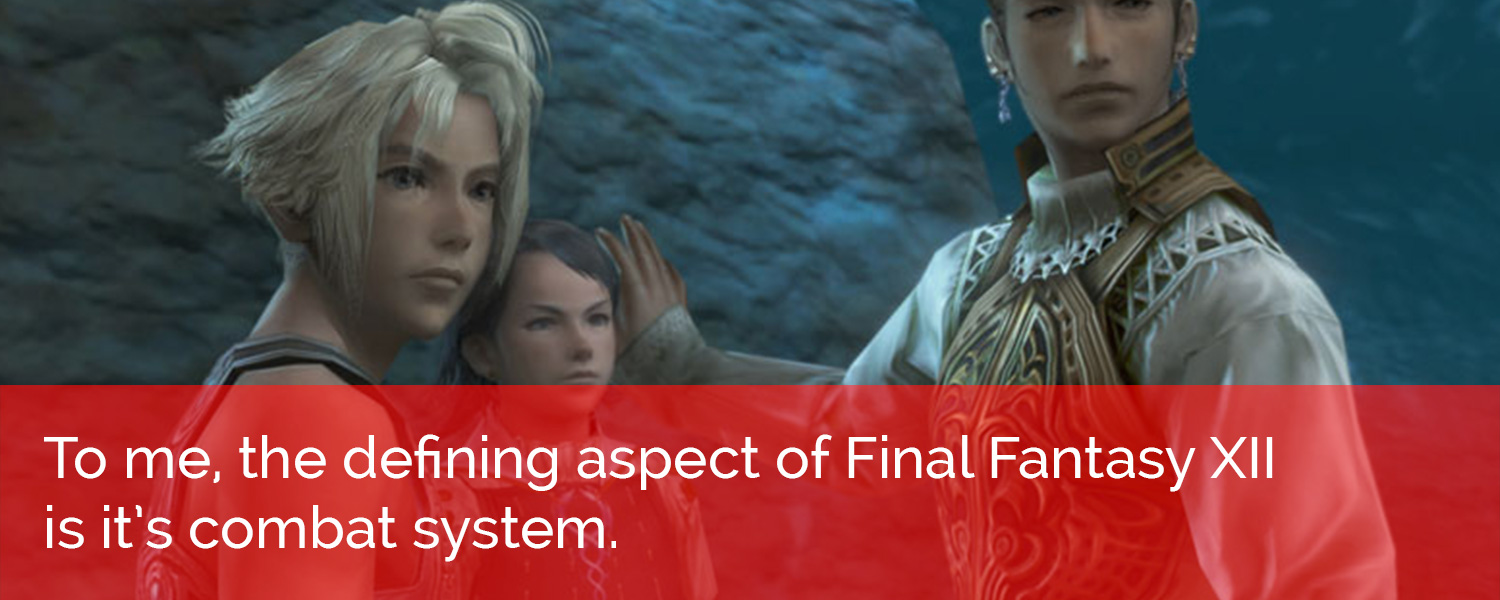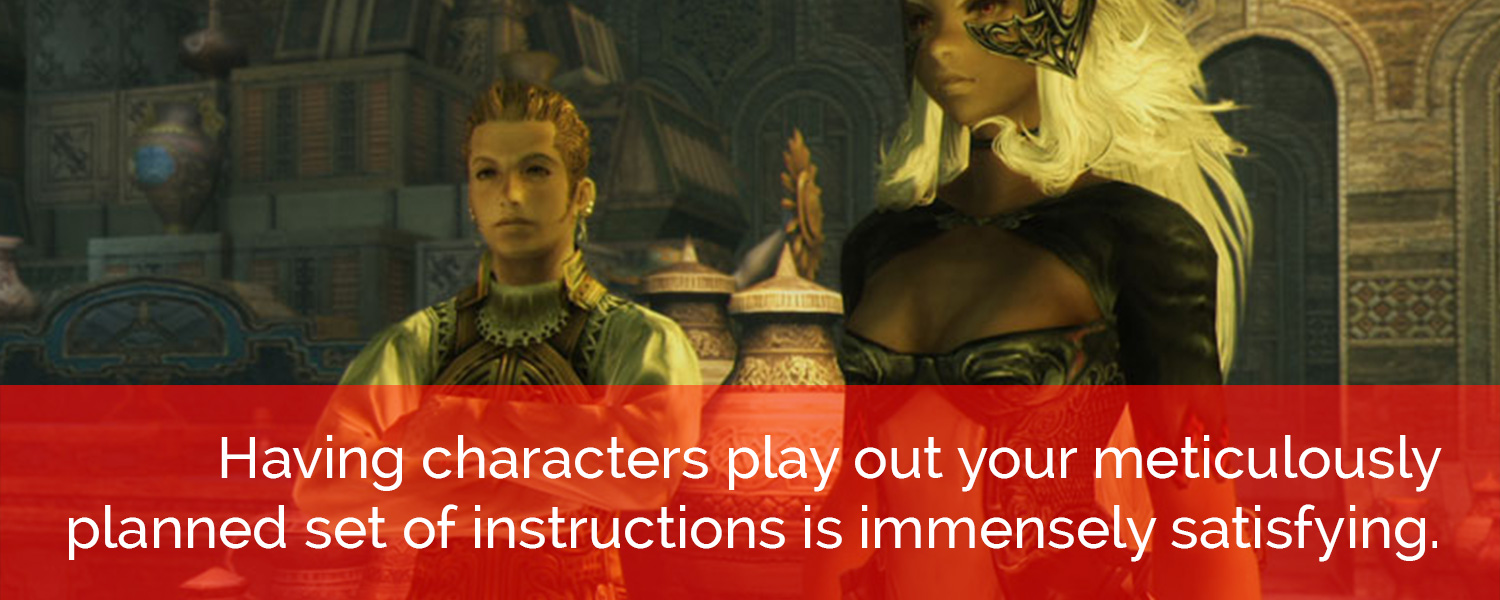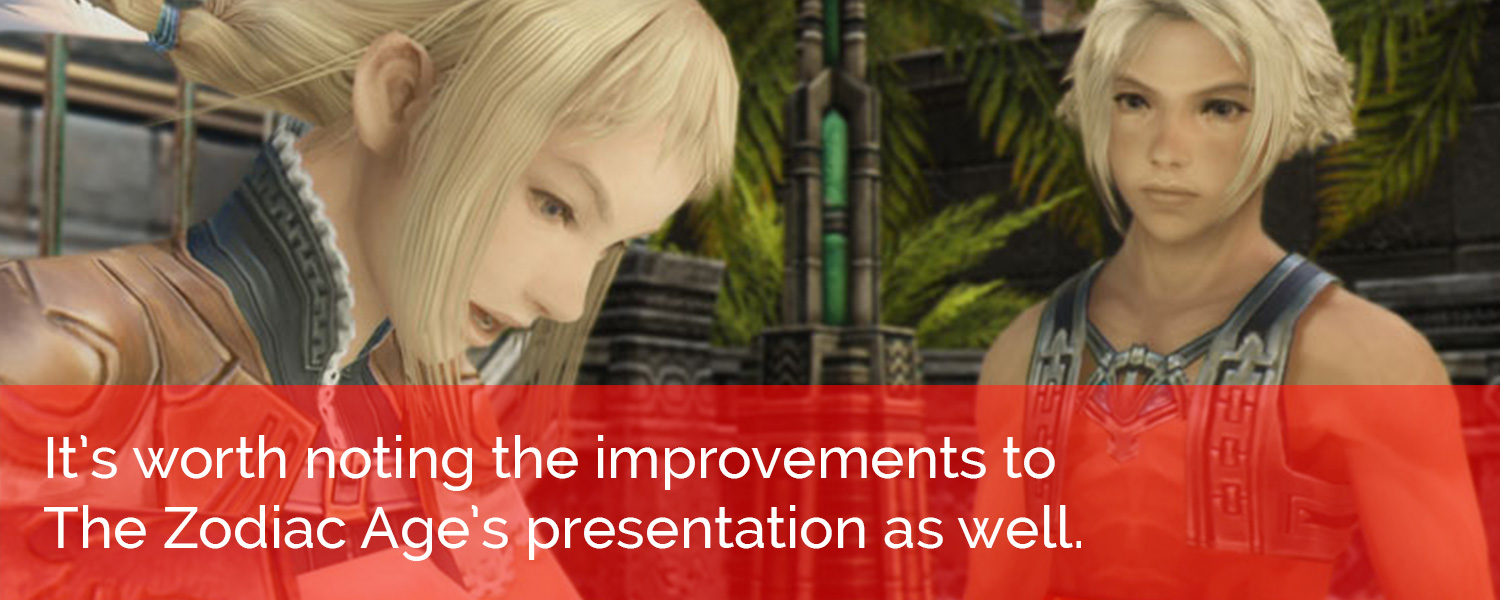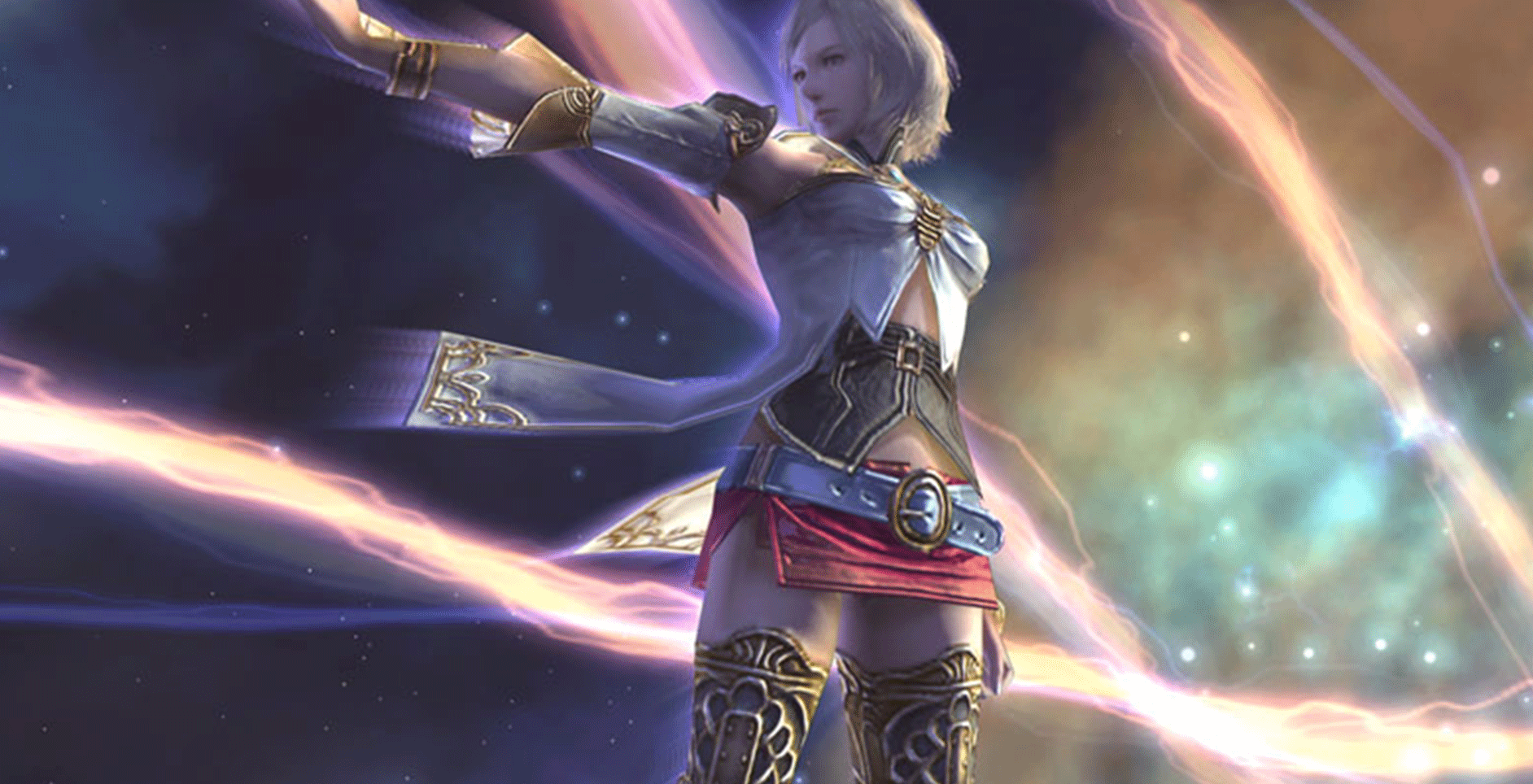Most of my Final Fantasy experiences come from the so-called golden age of Final Fantasy, the PlayStation era – so Final Fantasy XII is a bizarre left turn compared to what I’m used to from the series. Gone are the traditional turn-based battles and the characters defined by their own personal melodrama – in their place, a character programming combat system and a story concerned with the rise and fall of empires. I never played Final Fantasy XII during its time, and so knew only of its reputation as being a bizarre black sheep of the series. The Zodiac Age was a chance for me to experience the game for the first time with the expectations of a player in 2017. It turns out I’d really missed out on something special until now.
To me, the defining aspect of Final Fantasy XII is it’s combat system. It is completely unlike any Final Fantasy title before it, and while different to what would come later it hints at some of the series’ future direction. Final Fantasy had flirted with the idea of making turn-based combat more ‘active’, specifically through the various iterations of the Active Time Battle system – XII takes this active combat concept and combines it with more MMORPG-style encounter design. Rather than randomly entering battles while in combat areas, enemies you encounter share the field with you. There is no separate battle screen and you are free to navigate and avoid counters at your leisure.
The MMORPG comparisons go deeper still when you look at how combat actually plays out. You can still give each character individual commands, but juggling a team of three or four characters in close to real-time is a near impossibility. This is where Gambits come into play, allowing you to utilise a series of if/then logical instructions to dictate how your characters will approach situations. As an example, I might choose to have a character use healing magic if a party member’s health falls below 40%, always attack the enemy targeted by the party leader, or use elemental magic when a nearby enemy is weak to a particular element. You can also assign importance to each command, so you can make a character prioritise healing over combat magic as an example. This change of combat style has huge ramifications on how you approach situations. Rather than primarily reacting to an enemy encounter, you’re pre-emptively trying to engineer the best set of Gambits for your three (or occasionally four) character party to deal with any upcoming situation. As encounters become more difficult and varied throughout the game you’ll need to re-evaluate your Gambit choices in light of new abilities and changing opponents. I found this idea of designing a combat recipe for success super engaging, and found myself examining the general strategies I used in turn-based games and mapping those to Gambits. Having characters play out your meticulously planned set of instructions is immensely satisfying. In a way, you’re becoming a junior AI programmer and watching your creations succeed or fail based on your design.
This change of combat style has huge ramifications on how you approach situations. Rather than primarily reacting to an enemy encounter, you’re pre-emptively trying to engineer the best set of Gambits for your three (or occasionally four) character party to deal with any upcoming situation. As encounters become more difficult and varied throughout the game you’ll need to re-evaluate your Gambit choices in light of new abilities and changing opponents. I found this idea of designing a combat recipe for success super engaging, and found myself examining the general strategies I used in turn-based games and mapping those to Gambits. Having characters play out your meticulously planned set of instructions is immensely satisfying. In a way, you’re becoming a junior AI programmer and watching your creations succeed or fail based on your design.
Improvements over the game’s original incarnation help make this process of designing and testing your character creations less tedious. The Zodiac Age adds an auto-save feature that saves your progress at the beginning of every new zone, meaning that if you do manage to let your entire party be wiped out you won’t lose a great deal of progress. Not constantly stressing about when you last saved makes for a far more enjoyable game. Another particularly useful quality of life improvement is the speed option, which I found helpful when pursuing hunts in previously explored areas. When you’re confident you’ve seen most everything an area has to offer and can reliably defeat the local foes, 2X speed makes the journey back across familiar areas feel like a more efficient use of time. It’s quite well implemented and doesn’t affect menu navigation or cut scenes, only the actions you want to be at ludicrous speed. Personally, I found the 4X speed option a bit too fast to handle, but it’s there if that’s your jam. A toggleable map overlay on the main game screen is useful too – while it makes the game screen look a bit busy, it can save a lot of the annoyance of having to pause and check the map screen to get your bearings when navigating a dungeon.
When you’re confident you’ve seen most everything an area has to offer and can reliably defeat the local foes, 2X speed makes the journey back across familiar areas feel like a more efficient use of time. It’s quite well implemented and doesn’t affect menu navigation or cut scenes, only the actions you want to be at ludicrous speed. Personally, I found the 4X speed option a bit too fast to handle, but it’s there if that’s your jam. A toggleable map overlay on the main game screen is useful too – while it makes the game screen look a bit busy, it can save a lot of the annoyance of having to pause and check the map screen to get your bearings when navigating a dungeon.
The ‘Job System’ in FFXII is based on the International Zodiac Job System, previously exclusive to a Japan release. In this new system each character can be assigned a job from the twelve available. There are no restrictions as to which characters can be assigned which job, but once assigned that choice is locked and cannot be changed. Later in the game, each character can be assigned a second job, which allows you to potentially complement their first to cover weaknesses or double down on strengths. I found the freedom of this system a little overwhelming at first. I’m used to characters having a defined role, and I found myself constantly anxious that I might not be choosing the best job for the character or even the best complementary job for each once that option became available. I’m sure there are proven best combinations that have been found, but once I overcame the anxiety of not knowing the ‘best’ jobs, I found the freedom of the system didn’t let me really make any ‘wrong’ choices. I gave each new character a job that sounded interesting, and when assigning second jobs I thought about what would match well with the first and just ran with it. On reflection, I was worried over nothing as an intimidated first-timer – the freedom of character building will likely lead to some fun experimental combos for seasoned veterans. It’s worth noting the improvements to The Zodiac Age’s presentation as well. Speaking as a new player I found the remastered musical score suited the game well, and there is an option to toggle between this and the original score based on your preference. The visuals look about as nice as a PlayStation 2 game can look on modern hardware, with improvements to textures ensuring the game doesn’t look too outdated in 1080p or 1440p resolutions (depending on your console). Nobody’s going to be fooled into thinking Final Fantasy XII is a game from 2017, but it’s a sight much more appropriate for today’s screens than the original PS2 game.
It’s worth noting the improvements to The Zodiac Age’s presentation as well. Speaking as a new player I found the remastered musical score suited the game well, and there is an option to toggle between this and the original score based on your preference. The visuals look about as nice as a PlayStation 2 game can look on modern hardware, with improvements to textures ensuring the game doesn’t look too outdated in 1080p or 1440p resolutions (depending on your console). Nobody’s going to be fooled into thinking Final Fantasy XII is a game from 2017, but it’s a sight much more appropriate for today’s screens than the original PS2 game.
I’ve neglected to mention the story so far, but I feel like its importance paled next to the interesting mechanics here. Characters are generally interesting, playing off each other well, but they’re mostly along for the ride – taking a back seat in a narrative of warring empires. It’s different to the character-driven narratives of most Final Fantasy games, but still enjoyable at this grand scale.



